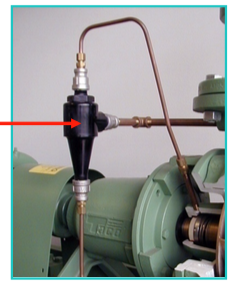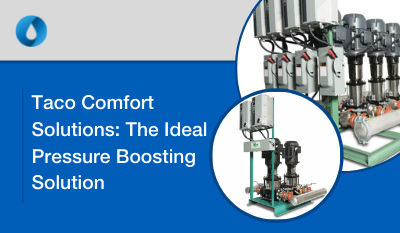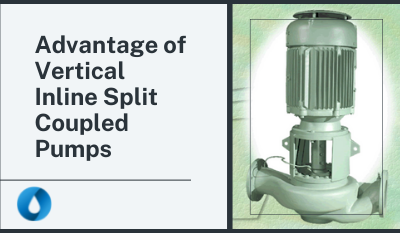You can purchase the best pump in all the world for your commercial HVAC system but, if it is installed improperly, it will mean additional costs in replacement parts, labor expenses and equipment down time. If you want to keep commercial pumps running for the long haul, you need to insure that best practices are followed, starting with the initial installation.
- Don’t add additional stress to your pumps. Be sure to include flexible connectors to prevent external piping loads. Additionally, ensure that adjacent piping hangers are properly installed!
- Mechanical Seals. When seals go bad, it’s often due to other issues, the majority of which are caused by improper installation. First of all, be sure to select the correct seal for the application. Also, NEVER run the pump dry and never operate at a “dead head” (at shut-off condition) for more than a couple minutes. For flexible coupled pumps, ensure that the pump shaft is properly aligned during installation and again during startup.
- Most bearing failures are caused by misaligned pump shafts (have we stressed alignment enough yet?), excessive heat (usually from OVER-lubrication), and dirt or moisture contamination.
- Keep your balance. Base mounted end pumps must be properly aligned to maintain balance and decrease pump vibration. For other pumps, be sure that the impellers are appropriately balanced prior to startup. You don’t want that impeller wobbling around like a ceiling fan in the old saloon!
- Proper pressure gauge installation. A lot of people think that if one pressure gauge is good, then two is better. However, installing two gauges will not be accurate for pump performance. Install only one gauge according to the O&M manual.

- Install external seal flush lines. An external flush will keep damaging solids away from the seal, isolate the seal from pumped fluid, cool the seal and carry away seal generated heat. Adding a sediment separator on the seal flush line will also significantly boost the life expectancy of your mechanical seals.

- Bleed the air from the volute. Air has no business there.
- Drain pans. Always use drain pans for chilled water condensation and for all pumps to catch water any time you have to open up the volute. Piping the drain pan to a floor drain will help keep your mechanical room clean and safe from stray puddles!
- Protect the pump from foreign debris. Utilize a suction strainer or some other form of solid/sediment separator to clean your system and keep trash from ruining your impellers and mechanical seals. And don’t forget that suction diffusers have fine mesh temporary screens that should ALWAYS be removed after initial startup and system flush. Hang it on the inlet valve handle so everyone knows it’s done!
We’ve all seen those HVAC pumps that have lasted 30+ years, yet we are seeing more and more replacement requests for pumps much younger. It’s not that pumps aren’t manufactured with the same quality but that they aren’t installed with the care they once were. Pumps are built to last a long time if you follow proper installation procedures and adhere to maintenance routines. Always consult the manufacturer’s O&M manual prior to and during installation and for the maintenance schedule after startup. And, as always, don’t hesitate to contact your manufacturer’s rep with any questions or concerns.
Join us for this free lunch and learn next week at our headquarters in Greensboro! Learn more about HVAC pump selection and installation. Click below for additional details and to register.




.png)




Submit a Comment